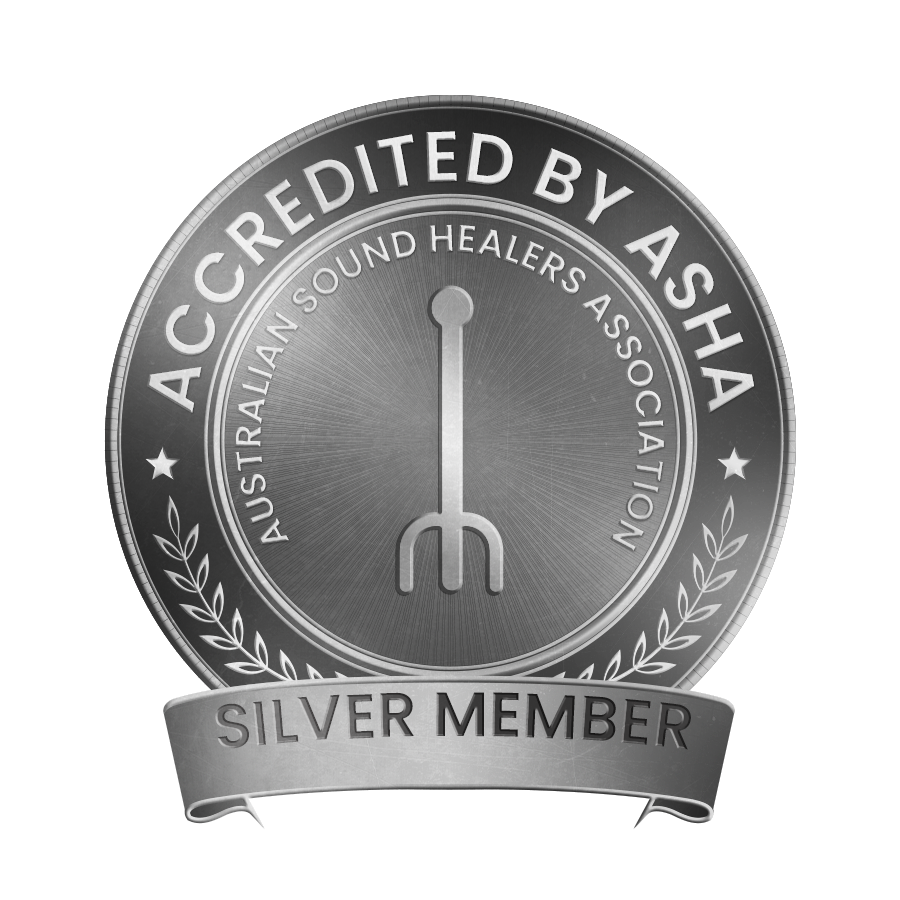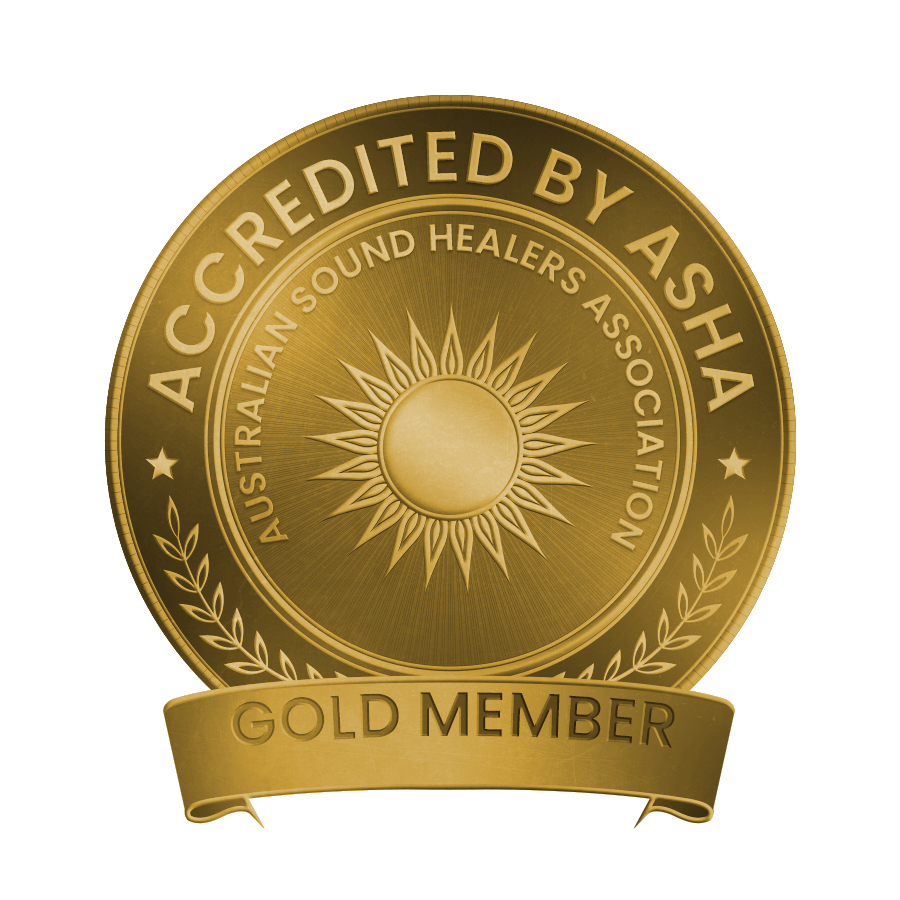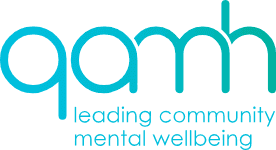Welcome to The Australian Sound Healers Association (ASHA)
Where science meets spirit, and soul-led practitioners
become confident professionals.
Become a Certified
Trauma-Informed Sound Therapist
"In the future, what we think of as sound healing will be called
frequency medicine."
— Joshua Leeds, Author of The Power of Sound

WHO WE ARE
We are ASHA, a movement devoted to ethical, inclusive, and trauma-informed sound therapy.
As a nonprofit association, we support emerging and established sound therapists with structured training, practitioner pathways, and a community rooted in care, clarity, and spiritual depth.
At ASHA, your healing gifts are recognised. Your voice is valued. Your growth is supported.
CERTIFIED SOUND THERAPY PRACTITIONER COURSE
Our signature 10-module Advanced Practitioner Training is delivered via Thinkific and Zoom, blending science-backed methods with intuitive, trauma-informed guidance.
You’ll gain:
A trauma-informed, globally accessible curriculum
Live peer Zooms and structured assessments
Practical skills + ethical frameworks for safe facilitation
Lifetime ASHA certification, badge + pathway to membership
Investment Options:
$2997 AUD (pay in full)
3-month plan: $1097/mo AUD
6-month plan: $597/mo AUD
Graduates receive access to practitioner directories, membership upgrades, and insurance pathways.


CHOOSE YOUR JOURNEY
Select the membership tier that perfectly aligns with your sound therapy practice goals

SILVER MEMBERSHIP
$97/year
Silver Membership is your introduction to the ASHA community. It’s designed to support students and practitioners with foundational resources and connection.
You receive:
12-month access to the ASHA practitioner forum and online community
Monthly member newsletters and insight updates
10% discount on shop templates, digital tools
Access to discounts on courses and events
Community networking with peers and mentor
Association Member badge for your website and socials
Access to apply for practitioner insurance (public liability + professional indemnity)
Free 12 month Silver Membership for students

GOLD MEMBERSHIP
$197/year
Gold Membership is for certified practitioners ready to be seen, supported, and connected on a professional level.
You receive everything in Silver, plus:
Listing in the ASHA Public Practitioner Directory
Association Member badge for your website and socials
Access to apply for practitioner insurance (public liability + professional indemnity)
Priority features in ASHA newsletters, events, and community spotlights
Access to a curated collection of sound therapy podcasts and interviews
Exclusive links to scientific research on sound, vibration, and trauma recovery
Available to ASHA graduates or recognised equivalent practitioners via Recognised Prior Learning (RPL)

PLATINUM MEMBERSHIP
Platinum Membership recognises leadership, mentorship, and long-term contribution to the field of sound healing.
PATH 1: PLATINUM EDUCATOR
For Course Creators, Facilitators,
and Modality Developers
This pathway is ideal for professionals delivering their own trainings who want formal ASHA recognition
PATH 2: PLATINUM PRACTITIONER
For Advanced Students, Professionals,
and Lifelong Learners
This stream supports practitioners pursuing mastery, community, and professional credibility
OUR ETHICS
Healing Grounded in Integrity
ASHA exists to raise the standard of vibrational medicine.
We honour both ancient wisdom and modern science. We support trauma-informed facilitation and practitioner readiness at every level.
Every training, toolkit, and Zoom call is built on:
Cultural respect
Practitioner responsibility
Trauma awareness
Energy integrity
WHAT OUR MEMBERS SAY

“This truly is a fantastic comprehensive course giving access to a broad amount of information and industry professionals. Leith and Lilly are passionate about delivering a quality course and are extremely supportive”
- Mariza De Feudis

"Dear Leith, I just wanted to take a moment to express my deepest gratitude for the wisdom, guidance, and inspiration you shared throughout the ASHA journey. Your passion for sound healing has left a lasting impact on me, and I feel truly blessed to have learned from you.
This experience has not only deepened my understanding of sound as a healing tool but has also opened my heart and mind in ways I never expected. I am so excited to carry these teachings forward and share the gift of sound with others.
Thank you for your kindness, patience, and the space you created for learning and growth. I appreciate you more than words can fully express! With gratitude and harmony."
- Lisa Maloney

"Connecting with like-minded people during the course was important. I chose the training to be part of a community that shares a love for sound, and found that it exceeded my expectations! I felt that I was with my "tribe" and that the connections made during the course will grow stronger over time.”
- Michelle Berlin
YOUR NEXT STEP STARTS HERE
ASHA meets you where you are, and walks beside you as you rise.
Whether you’re learning to hold space or leading the next generation, this is your place to belong, grow, and thrive.









